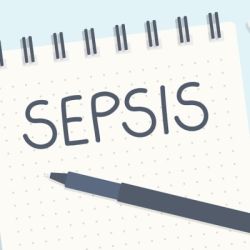In 2017, an estimated 25 million children worldwide experienced sepsis, resulting in over 3 million deaths. Paediatric sepsis survivors often face ongoing physical, cognitive, emotional, and psychological challenges. Children, particularly in lower-resource settings, face a higher risk of developing sepsis during their early years. The World Health Organization's resolution on sepsis underscores the need for accurate criteria to identify high-risk cases in children for improved diagnosis, prevention, and management.
The latest criteria for paediatric sepsis were established in 2005 by the International Pediatric Sepsis Consensus Conference (IPSCC). It was based on expert opinion that characterised sepsis as a suspected or confirmed infection with the systemic inflammatory response syndrome (SIRS). However, these criteria were similar to adult sepsis criteria (Sepsis-2) and lacked specific validation for children.
In 2016, Sepsis-3 revised criteria for sepsis and septic shock in adults differentiated sepsis from uncomplicated infection based on life-threatening organ dysfunction. However, these criteria were not validated or adapted for children.
Paediatric sepsis differs significantly from adult sepsis due to age-specific vital sign variability, developmental age-dependent immune function, and other paediatric-specific factors. Given the global impact of sepsis on children, there is a crucial need for derived and validated sepsis criteria specifically tailored to the paediatric population.
The Society of Critical Care Medicine (SCCM) formed a task force of 35 paediatric experts across various disciplines. These experts, from six continents, including critical care, emergency medicine, infectious diseases, general paediatrics, nursing, public health, and neonatology, used evidence gathered from an international survey, systematic review, meta-analysis, and a newly developed organ dysfunction score based on over 3 million electronic health record encounters from 10 sites on four continents.
The SCCM task force recommends identifying sepsis in children using the Phoenix Sepsis Score, with a minimum score of 2 points in children with suspected infection. This score indicates potentially life-threatening respiratory, cardiovascular, coagulation, and/or neurological dysfunction. Children meeting this criterion had significantly higher in-hospital mortality rates (7.1% in higher-resource settings and 28.5% in lower-resource settings) than those not meeting these criteria. Mortality was higher in children with dysfunction in at least one of the four organ systems (respiratory, cardiovascular, coagulation, and/or neurological) that was not the primary site of infection. Children with septic shock had in-hospital mortality rates of 10.8% in higher-resource settings and 33.5% in lower-resource settings.
The Phoenix Sepsis Score, with a minimum score of 2, effectively identifies potentially life-threatening organ dysfunction in children under 18 years old with infection. Adopting this score can enhance clinical care, facilitate epidemiological assessments, and contribute to research efforts in paediatric sepsis and septic shock on a global scale.
Source: JAMA
Image Credit: iStock


















